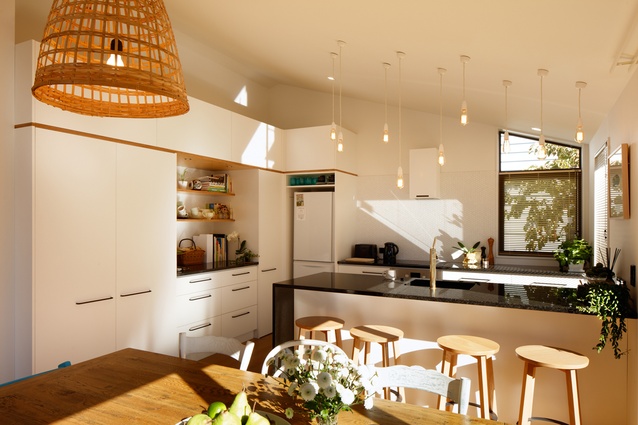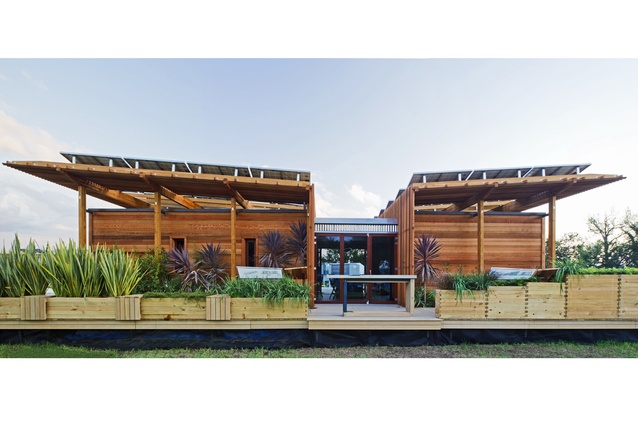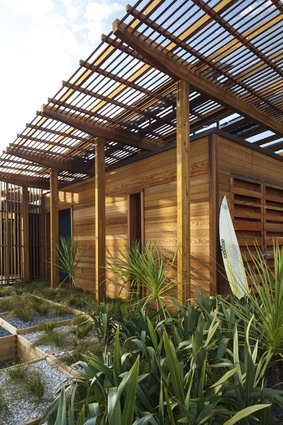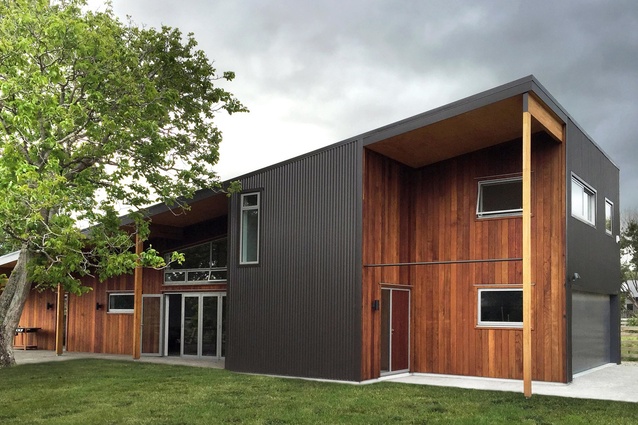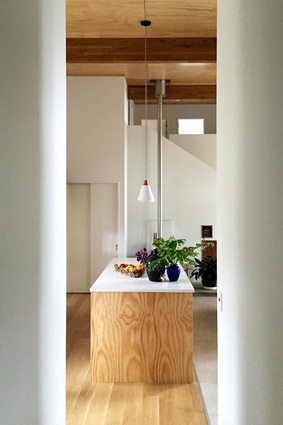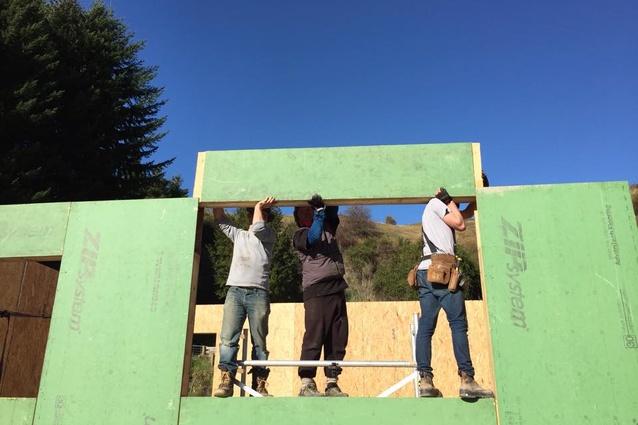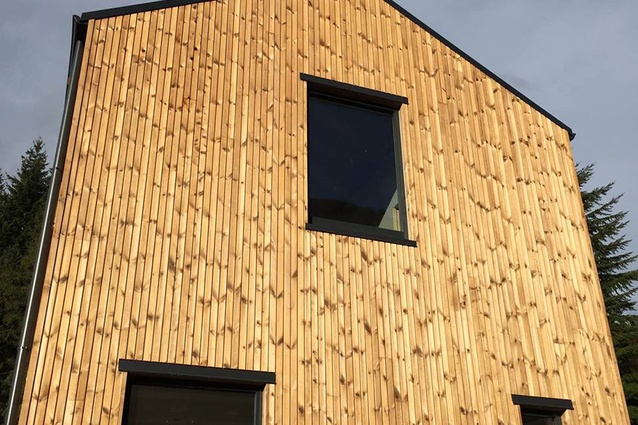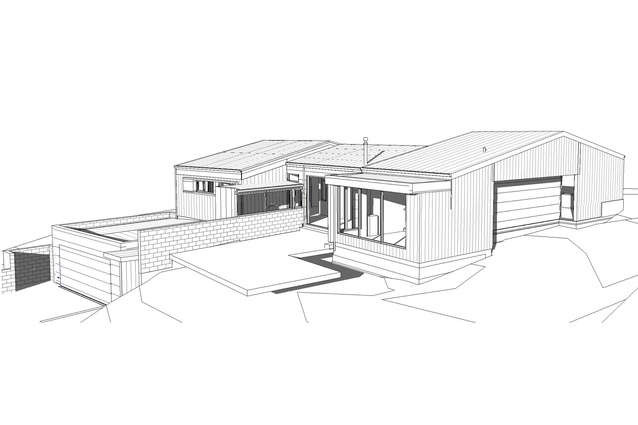Creating smarter homes
More than ever before, it's clear that we urgently need to start building our houses in a more environmentally sustainable way with passive and energy efficient design principles in mind. How do we go about this in New Zealand and start to create some widespread change?
Amelia Melbourne-Hayward speaks with Nick Officer of First Light Studio and Guy Shaw of Energy Architecture NZ about renewable energy technologies and how we can best maximise energy efficiency in our homes.

AMH: How do you design and build an environmentally responsible building that uses renewable energy technology, without adding in huge additional costs?
Nick Officer: Good design is the first and most important step to creating an environmentally responsible building; if we can design a home that is responsive to its site (sun, natural ventilation), and has a clever footprint that is no bigger than it needs to be, we can make a huge impact on the energy required to run the home. This approach also allows us to invest in a higher quality construction, resulting in increased insulation, thermally broken walls and windows, and renewable energy technologies without adding an enormous additional cost.

AMH: What do you think are some of the key ways we can encourage the uptake of sustainable buildings that use renewable technologies in New Zealand? How do we create widespread change?
Guy Shaw: First and foremost, our designs must be energy efficient. Generation of on-site renewable energy has been enforced before (in the United Kingdom), with the unintended consequence of stripping funds out of other areas of projects. One example I directly experienced was a reduction in insulation levels to fund solar panels.
That said, we must first mandate maximum heating/cooling demand levels for achieving comfort, then maximum energy usage for equipment, lighting and appliances, and finally, maximum overall energy usage (which can be reduced with renewables).
NO: There is and has to be a shift in the way we live and the way we build homes if we are to meet the current demand for housing in New Zealand. We hope the result of this is higher density developments using prefabricated building techniques that take a holistic approach to sustainability, including the integration of renewable energy technologies.
However, this thinking has to come from the top; from government and policy makers, from developers, from product manufacturers and suppliers, and from designers in order to make this a reality. One house at a time is not enough.

I also wonder how quickly the building industry would respond, particularly in relation to renewable energy, if the cost of electricity was five times the price it is now?
AMH: Nick, are you seeing an increase of clients that are aware of and actively seeking homes that are energy efficient and sustainable?
NO: Since First Light Studio’s inception in 2012 we have always been approached by the sort of clients that inherently believe in building differently and building better! Warm, comfortable, healthy homes are what we do best and what we are known for.
AMH: If we don’t start widespread construction that works with passive and energy efficient design principles, what will be the impact on climate change?
GS: If the construction industry fails to pull it weight and carries on with business as usual (building to the lowest energy efficiency targets possible and often missing them), then the outlook is pretty dire: massive economic instability. That said, energy efficiency is an easy win using opportunities/technology that already exist. Design decisions we make today lock in energy usage patterns for decades, so let’s get to it.
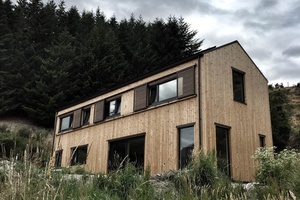
NO: It is generally understood that construction waste makes up 40 per cent of the waste worldwide, so I wouldn’t think there is any doubt that the industry has a responsibility to the current and future state of the climate. Designing smaller and smarter in order to reduce resource and energy consumption, then sourcing locally and reducing material wastage could make a significant change to the industry’s ecological impact before even starting to consider how passive and/or active energy technologies contribute to climate change.
AMH: Is it difficult to retrofit our existing building stock with these renewable technologies, or would it be better to pull down existing inefficient stock and replace them with highly functional, well-designed homes?
GS: Again, first priority must be energy efficiency (heating/cooling and equipment, lighting and appliances), and then renewables. There are just too many existing buildings to contemplate wholesale demolition and rebuilding. Ideally, it should be case by case or type by type as has been done overseas with exemplars for various building types.
NO: Given the current state of housing and homelessness in New Zealand, I don’t think that we have the luxury – or the desire – to pull down the existing inefficient and unhealthy building stock throughout the country. The vast majority of New Zealand homes constructed in the 20th century could be defined as inefficient, unhealthy, or both… especially when rated against housing from other parts of the world.

There are certainly retrofit opportunities that can help to improve the performance of these homes: some relatively simple, such as adding double glazing, sealing air leaks, replacing incandescent lightbulbs with LED lighting, and adding underfloor and ceiling insulation – and some more complicated – such as adding wall insulation and installing integrated heating solutions or energy generating technologies. However, there are still many houses being built that fall below the standard that we should be achieving.
AMH: Can we somehow capitalise on the large supply of geothermal energy that New Zealand has, and harness it for better use in our buildings?
GS: Possibly, but district heating schemes are notoriously inefficient. They generally waste a lot of energy in distribution and only make sense in certain situations (high density or city centre). Again, energy efficiency is usually a much better investment, leading to smaller heating/hot water demands which can be satisfied with simpler equipment.
AMH: Guy, what are some emerging techniques and technologies that can reduce the cost of building energy efficient houses?
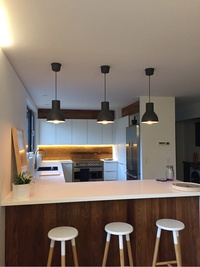
GS: The Passive House Standard is the most promising technique for achieving up to 90 per cent reductions in heating/cooling demand. It’s centred around using efficient building form, a high performance building envelope, and detailed analysis of building performance. It has been used for over 25 years, with verifiable performance. All other measures towards sustainability such as overall energy use, water use, embodied energy, etc. must be built off a basis of an energy efficient design using the Passive House Standard or similar.
Unnecessary complexity is the greatest issue with achieving affordability. Adding energy efficiency measures to complex designs is bloody expensive, better to start with the most energy efficient design possible for a site and work from there. A well-designed Passive House can be cheaper than a complex house of the same size built to less stringent energy efficiency standards.
AMH: Nick, the Meridian First Light House came third in the Solar Decathlon in 2011. Did building this award-winning house help with the designs you create for your homes today?
NO: The First Light house that travelled to the US is maybe more akin to an America’s Cup boat than your typical Kiwi home. The Solar Decathlon is a competition focused on energy performance, and it measures ‘comfort’ in data and numbers with scientific precision. Because of this, the house had a lot of integrated technology, much more than what you’d find in a regular home. It was finely tuned and operated in order to perform to a competition-winning standard.
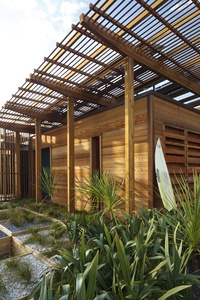
We haven’t yet replicated that level of technology in any of our new homes; rather we work very closely with our clients and their way of life to develop a technology approach that is both suitable for their day-to-day lifestyle, their budget and their expectation of ongoing cost. Such solutions have ranged from a simple woodstove and wetback system for heating, to a completely airtight construction that relies solely on solar-heated water piped through the floor slab for its heat.
We are certainly excited by what technology has to offer the building industry in the near future. Cost-effective home energy storage, solar windows, and even electricity generation in a film as thin as a coat of paint are all technologies that are currently in the R&D and prototyping phase!


